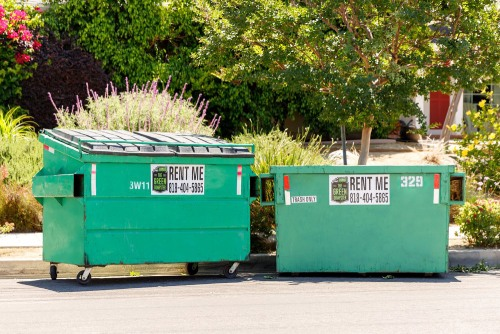As consumers turn out to be an increasing number of conscious in their meal picks, the call for grass-fed beef has surged. This shift isn't only a passing trend; it’s a life-style choice that promotes health, sustainability, and moral farming practices. If you’re in Houston and thinking about your meat options, here are ten compelling motives why you have to choose grass-fed beef.
1. Health Benefits of Grass-Fed Beef
One of the number one motives to pick out grass-fed beef is its fitness benefits. Grass-fed beef is regularly leaner than grain-fed beef, containing decreased tiers of overall fats. Moreover, it is rich in beneficial nutrients, consisting of omega-3 fatty acids, that are essential for heart fitness and lowering inflammation. Grass-fed beef also has higher tiers of conjugated linoleic acid (CLA), regarded for its ability to fight most cancers and improve frame composition.
2. Superior Taste and Quality
Many clients declare that grass-fed beef has a richer, extra sturdy flavor in comparison to its grain-fed counterpart. The food regimen of grass-fed cattle, consisting generally of grass and forage, contributes to this enhanced flavor profile. Additionally, due to the fact grass-fed beef is normally produced on smaller farms that prioritize high-quality over quantity, the general first-class quality of the beef tends to be higher, making it a scrumptious desire for your meals.
3. Environmental Sustainability
Choosing grass-fed beef isn't always best beneficial to your fitness however additionally for the surroundings. Grass-fed livestock are raised on pasture, which allows them to hold wholesome ecosystems. They make contributions to soil health by using grazing, which can result in higher carbon sequestration and a reduction in greenhouse gases. By opting for grass-fed beef, you are helping sustainable farming practices that prioritize environmental conservation.
4. Ethical Animal Treatment
Grass-fed farm animals are regularly raised in a more humane and moral environment as compared to conventionally raised livestock. They roam freely in pastures, letting them engage in natural behaviors, inclusive of grazing and socializing. Many grass-fed farms adhere to higher animal welfare requirements, ensuring that the cattle live healthier lives before they emerge as a part of the food chain.
5. Nutritional Transparency
When you select grass-fed beef, you regularly have better right of entry to facts regarding the farming practices and nutritional content material of the meat. Many local farms in Houston provide transparency approximately how their farm animals are raised, what they're fed, and the overall farming practices. This transparency fosters consideration among clients and manufacturers, permitting you to make informed choices approximately about the meals you consume.
6. Local Sourcing
By choosing grass-fed beef, you are probably assisting nearby farmers and the Houston economic system. Many grass-fed beef manufacturers operate on a smaller scale, emphasizing great sustainability. Purchasing from local farms no longer facilitates maintaining money inside the network but also reduces the carbon footprint related to transporting meat over long distances. This makes deciding on grass-fed beef an accountable choice for environmentally-aware purchasers.
7. Supporting Biodiversity
Grass-fed farm animals farming often promotes biodiversity. By rotating farm animals on pastures, farmers can decorate the type of plants that develop, supporting nearby wildlife and bug populations. A numerous environment can result in healthier soil and healthier livestock. When you choose grass-fed beef, you’re helping agricultural practices that foster biodiversity in preference to monoculture farming, which is normal in many grain-fed beef operations.
8. Reduced Antibiotic Use
Conventional beef manufacturing frequently is based heavily on antibiotics to sell booms and save you sickness in crowded feedlots. In evaluation, grass-fed livestock are generally raised in more healthy environments wherein they could graze freely, leading to a discounted need for antibiotics. By selecting grass-fed beef, you can minimize your publicity to antibiotic residues, that's a growing challenge for many purchasers today.
9. Economic Impact
Choosing grass-fed beef could have a fine effect on the nearby economic system. Many grass-fed beef manufacturers are family-owned farms that make contributions to the community's agricultural history. By purchasing their products, you're assisting those nearby corporations and helping to sustain conventional farming practices. This financial guide is important for maintaining the neighborhood food device and selling sustainable agriculture.
10. Bulk Buying Benefits
Finally, shopping for grass-fed beef in bulk can be a clever financial decision. Many nearby farms in Houston provide bulk purchasing options, permitting you to shop for large portions of meat at a lower fee in keeping with the pound. This no longer only saves you money however additionally ensures that you constantly have notable meat handy to your culinary needs. Additionally, buy beef in bulk reduces packaging waste, making it an extra environmentally pleasant choice.
Conclusion
Choosing grass-fed beef in Houston offers a mess of benefits, from progressing fitness to assisting local farmers and sustainable practices. With its advanced flavor, moral remedy of animals, and environmental benefits, it’s clear that grass-fed beef is a smart preference for any meat lover. As you do not forget your alternatives for best meat, take into account that buying grass-fed beef also can imply the opportunity to shop for meat in bulk, improving your culinary experience at the same time as supporting a more healthy lifestyle. So, make the leap into the sector of grass-fed beef; your taste buds and frame will thanks!












